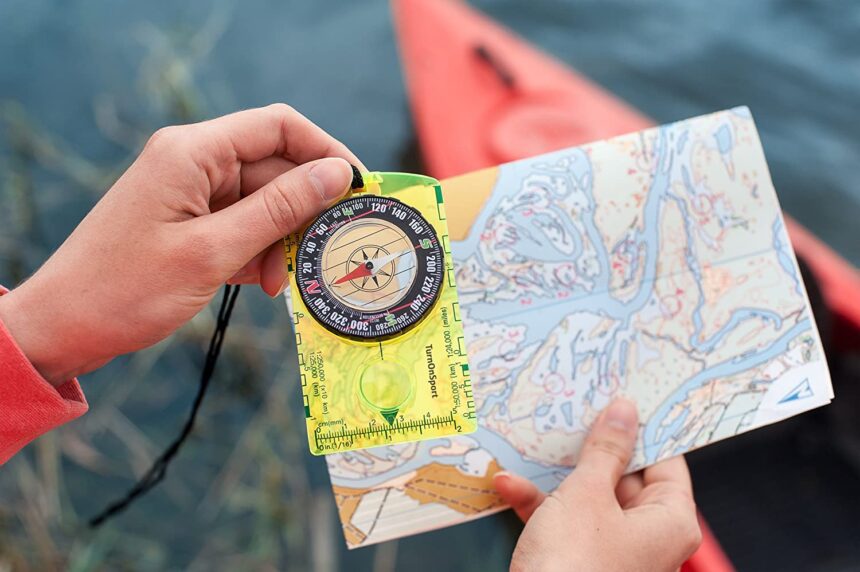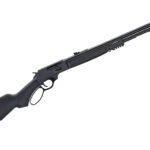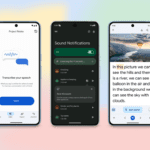Even on this technology-filled world, outdoor individual is aware of the significance of getting one of the best compass potential when adventuring exterior.
Sure, there are compass apps, however telephones can break or die and there’s no beating the reliability of a tried and true compass while you head off the crushed path.
The GearJunkie group consists of arctic explorers, aggressive orienteers, and achieved long-distance thru-hikers. We’ve ventured far past the bounds of well-traveled trails and 5G-LTE. We depend on compasses to keep up our bearings and stay in contact with our path of journey in white-out blizzards, dense forests, and barren featureless deserts.
A dependable compass could be the distinction between environment friendly backcountry journey and potential catastrophe. Via rigorous testing of dozens of compasses, the picks of this checklist have confirmed themselves as bonafide navigation instruments match throughout far-flung adventures.
We’ve discovered one of the best compasses to suit each funds and use. Scroll by means of to see all of our suggestions, or click on forward to the product you’re in search of. For info on compass varieties, options, and utilization suggestions, try our comparison table and buyer’s guide. In the event you nonetheless have questions, check out our checklist of frequently asked questions on the finish of this text.
Editor’s Be aware: We up to date this text on December 15, 2023, to dial in our collection of advisable merchandise, present extra shopping for steering, and embrace new pictures of our testing course of within the discipline.
The Finest Compasses of 2023
Best Budget Compass
-
Weight
1.6 oz. -
Increments
2 degrees -
Dimensions
8.23″ x 3.9″ x 0.67″

-
No declination feature, no direction box
Best Compass for Most People
-
Weight
1.06 oz. -
Increments
2 degrees -
Dimensions
4.09″ x 2.2″ x 0.39″

-
Light -
Easy to use -
Accurate
Best Travel Compass
-
Weight
2 oz. -
Increments
2 degrees -
Dimensions
2.64″ x 1.85″ x 0.87″

-
Compact -
Durable -
Balanced for use in all hemispheres
-
More expensive than others on this list
Best Compass for Kids
-
Weight
1.75 oz. -
Increments
Unknown -
Dimensions
3.35″ x 1.18″ x 0.98″

-
Yellow color makes it easy to find -
Shrill whistle makes your kids easy to find
-
No compass features besides finding magnetic north
Best Thumb Compass for Orienteering
-
Weight
0.95 oz. -
Increments
2 degrees -
Dimensions
3.15″ x 2.76″ x 0.43“

-
Quick read -
Attaches to thumb for use on-the-go
-
Specialized for racers -
No measurements or sighting tools
Best Hiking Compass
-
Weight
2.5 oz. -
Increments
2 degrees -
Dimensions
3.9″ x 2.5″

-
Global needle -
Protective case doubles as mirror and sighting notch
-
Lid snap takes a good amount of force to lock
Compass Comparison Table
How We Tested Compasses
The GearJunkie team is composed of hunters, anglers, climbers, backpackers, and paddlers. When our adventures take us away from the beaten path, reliable compasses become an essential tool. And our founder, Stephen Regenold, is one of the top adventure racers in the country and an avid orienteer. As such, he uses map-and-compass navigation extensively during race scenarios and has experience with many compasses.
We tested the compasses on this list while recreating in the field. Like all compass users, we prefer models that are accurate, durable, and intuitive. While roaming between waypoints and hugging long-distance bearings through featureless terrain, we paid careful attention to each compass’ precision, durability, versatility readability, and overall value. The compasses on this list held up to our scrutiny with flying colors. They’re the best of the best.
As new compasses hit the market in future seasons, we’ll be sure to test them in consideration for this product roundup. And if you’re wanting to get more digital with your navigation solutions, check out our guide on the Best Handheld GPS units.

Buyer’s Guide: How to Choose a Compass
Compass Types
There are three main types of compasses: the basic compass, the sighting compass, and the baseplate (or orienteering) compass. Some compasses contain elements of all three.
The basic compass has only one feature: a needle that points toward the magnetic north. It’s handy for any situation in which you only need to know your approximate direction. They tend to be inexpensive as well, so they can be useful for keeping as a spare.
Sighting compasses have flip-up lenses that allow users to get bearings from a distant object like a nearby peak. Put simply, use the sight notch to identify your desired location, adjust the bezel to align with the needle to identify the direction you need to go to get there, and then follow the heading.
Orienteering (baseplate) compasses are designed to be used with a map, as the base lays directly on the map for easy triangulation and orienting.
Many compasses combine a baseplate for map navigation and sighting accessories to combine the two types. This allows for whatever navigation method is most useful at any time.

How to Use a Compass
The short lesson on compasses is very simple: The compass needle always points to magnetic north. With that knowledge, you can maintain a consistent direction of travel relative to north.
The longer version of compass use is much more nuanced and complicated. Check out our full explainer on how to use a compass here.
Basic Compass Features
By definition, a compass will have a magnetic needle that always points to the magnetic north. Beyond that, compasses can sport a bevy of features, from liquid-filled needle casings and rotating bezels to whistles and thermometers (some are more useful than others), generally depending on the price range.
For general direction-finding, a basic compass will do. But for more in-depth orienteering, you’ll want a compass with the following features:

Needle
A magnetic needle that always points north is the most basic and essential feature of any compass. One of the more important features of a good compass is a quick but stable needle that finds north fast and consistently.
Housing
The mounting case holds the needle. It’s often filled with liquid to allow the needle to float freely and find magnetic north quickly. The liquid also dampens the motion of the needle.
Baseplate
The mounting for the compass housing, a baseplate is generally printed with tools that help find direction and distance. It provides a straight edge for identifying your location via triangulation.
Bezel
A rotating ring that surrounds the housing, the bezel is printed with direction indicators (N, S, E, W) and varying points in between.

Orienting Lines
Fixed within the compass housing, these lines are designed to align with the vertical grid lines on maps.
Orienting Arrow
Also fixed within the compass housing, the orienting arrow aligns to the magnetic north.
Direction-of-Travel Arrow
Fixed parallel to the sides of the baseplate, the direction-of-travel arrow shows the direction you want to travel.
Index Line
Fixed on the bezel. The index line is an extension of the direction-of-travel arrow. It marks the direction you set via rotating the compass housing.
Magnifier
Many baseplates feature a small magnifying lens for easier map reading.
Compass Scale
Located on the edges of the baseplate, the compass scale allows you to measure the distance on maps.
Key Features & Considerations

Besides the basic features mentioned above, these additional features can serve to make navigation easier or more accurate. They allow you to measure height and slope and to find north on any part of the globe.
Declination Adjustment
Declination adjustment allows you to adjust your compass for the varying difference between magnetic north and true north. Magnetic north (where a compass needle points) follows the direction of north in the Earth’s magnetic lines, and true north represents the direction of the North Pole.
Magnetic declination varies from place to place due to the changing nature of the Earth’s core. To compensate, many compasses allow you to adjust your compass readings to accommodate the magnetic declination for your location.
Sighting Mirror

Sighting mirrors are mirrors on a hinged lid that attach to the compass body. They allow you to see a direction or an object and your compass capsule at the same time. This allows you to orient your direction to a location and maintain that direction even when you can’t see the marker.
Clinometer
Clinometers measure the angle of elevation, the slope, or the height from the ground. Clinometers measure the height of objects and the steepness of hills (useful in avalanche terrain). They also gauge the height of your bear hang when you’re setting up camp.
Global Needle
Because the Earth’s magnetic field varies in different locations on the planet, a compass needle that balances well in one location may dip and drag or stick in a different location, making it completely useless. A compass with a taller dial allows the needle to tilt without hitting the casing, preventing that drag.
Compass Storage
In the past, caring for a compass would just mean not dropping it or crushing the casing. Now, people need to consider the plethora of electronic devices that can threaten a compass’s lifespan. Be sure to store your compass away from computers and other electronic devices — the magnetic fields can damage it.
The speakers in these devices can demagnetize the needle, rendering it useless. Also, keep it away from fires, heaters, and other hot places like a hot car. Any warping of the casing can affect the needle’s accuracy.
FAQ

The most accurate compass depends on several factors. Most importantly, you should know how to use it. Every compass can find north, but it’s up to you to know what to do with that information.
Your ability to read your bearings and follow them, or transfer a compass’s information to a map to find your location and put it to use accurately, is paramount. For more information on how to get the most out of your compass, check out our article on orienteering basics.
A good compass can cost anywhere from $10 for a simple compass with basic orienteering features to over $100 for a compass with a global needle, clinometer, mirror sight, and a plethora of other features. Consider the features you need versus what you’re willing to pay when choosing the best compass for you.
In addition to the standard needle and rotating bezel, look for a cover with sighting wire and luminous lighting dots for evening navigation, a flip-up sighting slot and lens (or rear sight), and a thumb loop for stability while sighting your visual marker.
Although a good lensatic compass is great for finding bearings, we prefer one that also incorporates the features of a baseplate compass. Look for a compass that combines the two to give you several methods of finding your way.
While compass apps may be less accurate than traditional compasses and rely on a battery, they’re very convenient. Most people already have their phones with them on adventures, and smartphones can sport a wide range of features that a traditional compass does not, like barometers, altimeters, and, of course, GPS.
We’re fans of the Gaia GPS app (free for iOS and Android) due to its map integration, which lets you use topo maps, aerial pictures, or a hybrid of the 2. It additionally exhibits your altitude, means that you can share that knowledge to maintain others knowledgeable of your location in case you get misplaced, and tracks knowledge like pace, time, location, and course. It may well additionally estimate your GPS accuracy to let should you begin going off beam.
Bear in mind, should you’re counting on an app for navigation, you’re additionally relying on the efficiency of the know-how. We suggest all the time having a conventional compass readily available in case your cellphone finally ends up on the backside of a lake.

There’s no must depend on your smartphone or smartwatch for navigation. We rounded up one of the best handheld GPS gadgets for locating your means.

Failure isn’t an choice in relation to selecting a satellite tv for pc messenger. Once you completely must get the phrase out, listed here are one of the best sat messaging gadgets in 2023.










